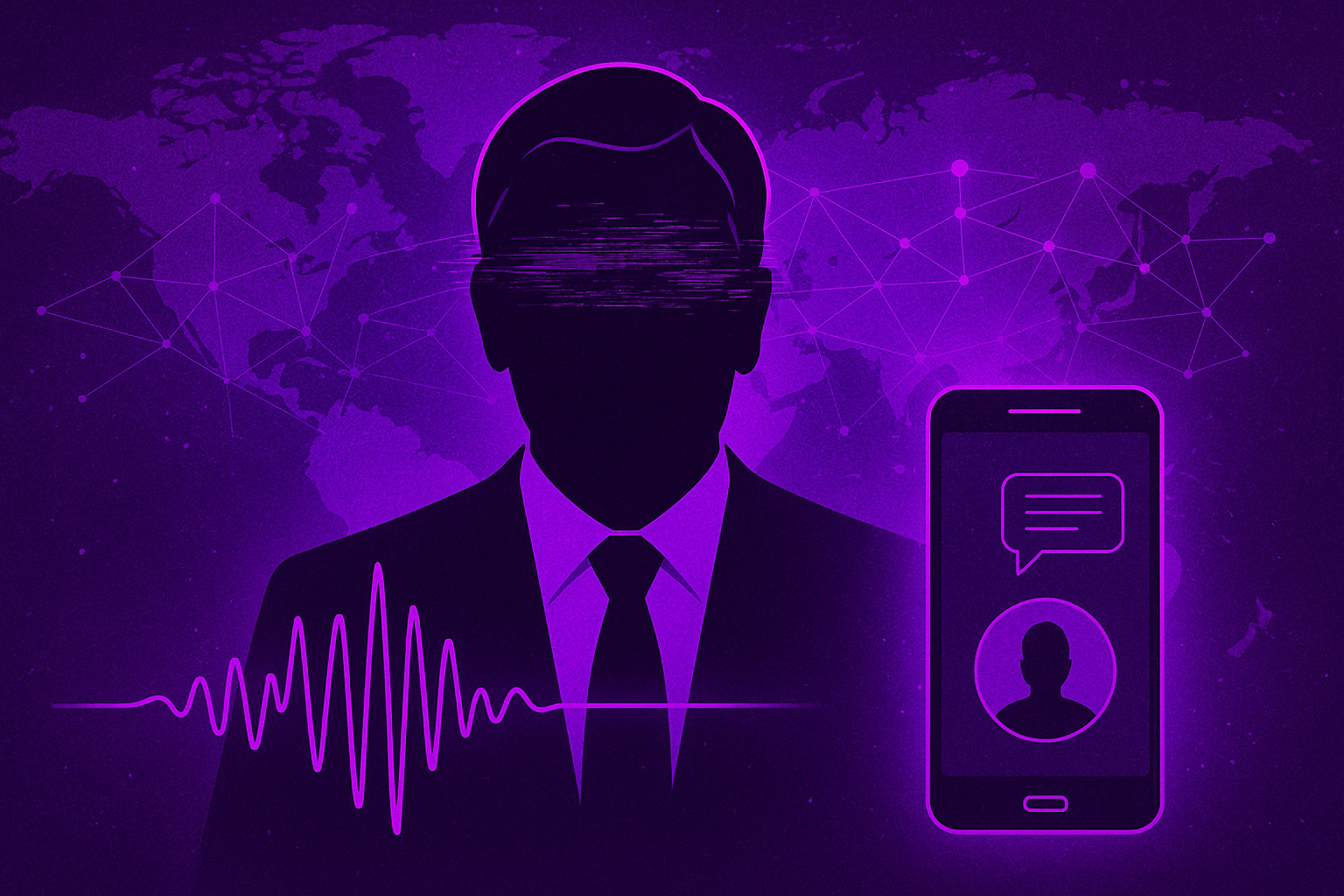The Marco Rubio Impersonation Attack and What It Means for CISOs

Yesterday, we learned that an unknown actor used AI-generated voice cloning to pose as U.S. Secretary of State Marco Rubio, cold-calling three foreign ministers, a U.S. governor and a member of Congress via Signal and standard SMS messages.
The goal: pry open new channels to sensitive information and accounts (Reuters). A State Department cable issued on July 3rd warned diplomats to “alert external partners about fake accounts,” underscoring how quickly a single deepfake can ripple across global security relationships (ASIS International).
This wasn’t an isolated stunt. Analysts who spoke with Dark Reading call it the third major deepfake scheme to hit senior U.S. officials in 18 months - and they’re bracing for more (Dark Reading).
Why This Incident Should Scare Enterprises, Not Just Governments
- The cost of a 30-second clip. Deep-learning models need as little as half a minute of public speech to create a convincing voice clone. Your executives leave that much audio on every webinar.
- Multi-channel reach. The attacker shifted seamlessly between voicemail, text and encrypted chat - exactly the omnichannel pattern we track in modern phishing campaigns.
- Trusted-identity bypass. When the “caller ID” is a familiar voice, traditional email gateways, voice biometrics and caller-ID checks offer no protection.
- Diplomatic stakes ≠ Enterprise stakes but the tactics rhyme. If a foreign minister can be fooled into returning a call, imagine what a busy finance manager might do when the “CFO” asks for a wire transfer on Teams.
The Jericho Take: Moving From “Detect” to “Immunise”
At Jericho Security we treat incidents like the Rubio impersonation as live fire-drills for the corporate world. Here’s how our platform is already adapting:
|
Threat Insight |
What Jericho Does |
|
Voice & video deepfakes can trigger high-trust actions |
Agentic-AI voice and video phishing simulations train users to challenge anything that sounds “just like the boss.” |
|
Attackers pivot across Email, SMS, Voice |
Multi-channel training coverage replicates that pivot so employees build muscle memory everywhere they work. |
|
Human error remains the last mile |
Dynamic risk scoring flags users who hesitate on deepfake scenarios and auto-enrols them in micro-lessons, before the real attacker strikes. |
|
Security teams drown in one-offs |
Low-admin orchestration rolls new deepfake templates to the whole enterprise in minutes, with no ticket wrangling. |
Five CISO Action Items Inspired by the Rubio Case
- Record the executive slate. Capture high-quality reference audio/video of top leaders today so you can train detection models on authentic speech patterns later.
- Mandate out-of-band verification. Institutionalize a second-factor for voice instructions - e.g., a short code word exchanged via a different channel.
- Audit “public voice surface area.” Marketing teams love posting keynotes online; red-team how each clip could be exploited.
- Simulate the breach, not just the phish. Use deep-fake audio in tabletop exercises; watch how quickly social-engineering failures cascade.
- Invest in provenance tech. Watermark internal video townhalls and store hashes on an immutable ledger so fakes can be challenged at origin.
Bottom Line
The Rubio incident shows that conversational phishing is officially a nation-state-grade weapon. Enterprises that still treat deepfakes as “future risk” are already late. Jericho’s agentic-AI simulations let your workforce confront the threat in a safe sandbox - so the first time they hear a cloned voice, they pause, probe and escalate.
Ready to harden your human firewall? Book your private session with Jericho’s leadership to see how hyper-real training keeps your organization one step ahead.